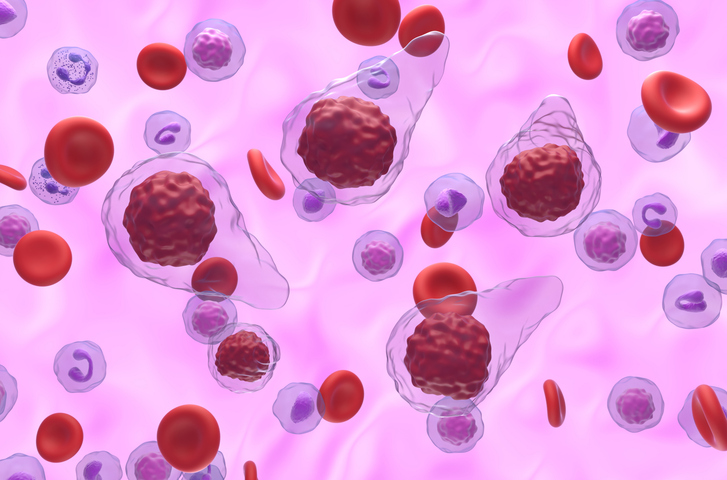
The known effects of various splicing mutations on patients with primary myelofibrosis (PMF) are similar to their effects on myelofibrosis secondary to polycythemia vera or essential thrombocytopenia (PPV/PET-MF), according to a retrospective study.
“Various splicing mutations seem to have similar effect on survival of PET/PPV-MF and PMF patients,” the investigators wrote.
The study, led by Julie Braish, MBBS, of the University of Texas MD Anderson Cancer Center in Houston, was presented as an abstract at the 65th American Society of Hematology Annual Meeting and Exposition in San Diego, California.
The investigators conducted the study because they wanted to further understand the effect of splicing mutations such as SRSF2, U2AF1, SF3B1, U2AF2, PRPF40B, and ZRSR2 on patients with PPV/PET-MF, for which the mutations are less well studied than for PMF.
Dr. Braish and colleagues retrospectively reviewed medical charts of 114 myelofibrosis patients from the MD Anderson Cancer Center who had splicing mutations identified by next generation sequencing (51+ gene myeloid panel).
SF3B1, which is considered a low-risk splicing mutation, was much more common among PET/PPV-MF patients (70%) compared to PMF patients (31%). In contrast, SRSF2, which is high risk, was less common among PET/PPV-MF patients (25%) compared to PMF patients (47%).
The median overall survival rates (95% CI) by splicing mutation were as follows: SRSF2 46 months (23-70), U2AF1 not reached, and SF3B1 130 months (104-156).
“Among the high-risk splicing mutations, SRSF2 has the worst prognostic role,” the researchers noted.
Reference
Braish J, Bose P, Permaraju N, et al Deeper Insight into Splicing Mutations in Myelofibrosis. Abstract #4580. Presented at the 65th ASH Annual Meeting & Exposition; December 9-12, 2023; San Diego, California.






 © 2025 Mashup Media, LLC, a Formedics Property. All Rights Reserved.
© 2025 Mashup Media, LLC, a Formedics Property. All Rights Reserved.